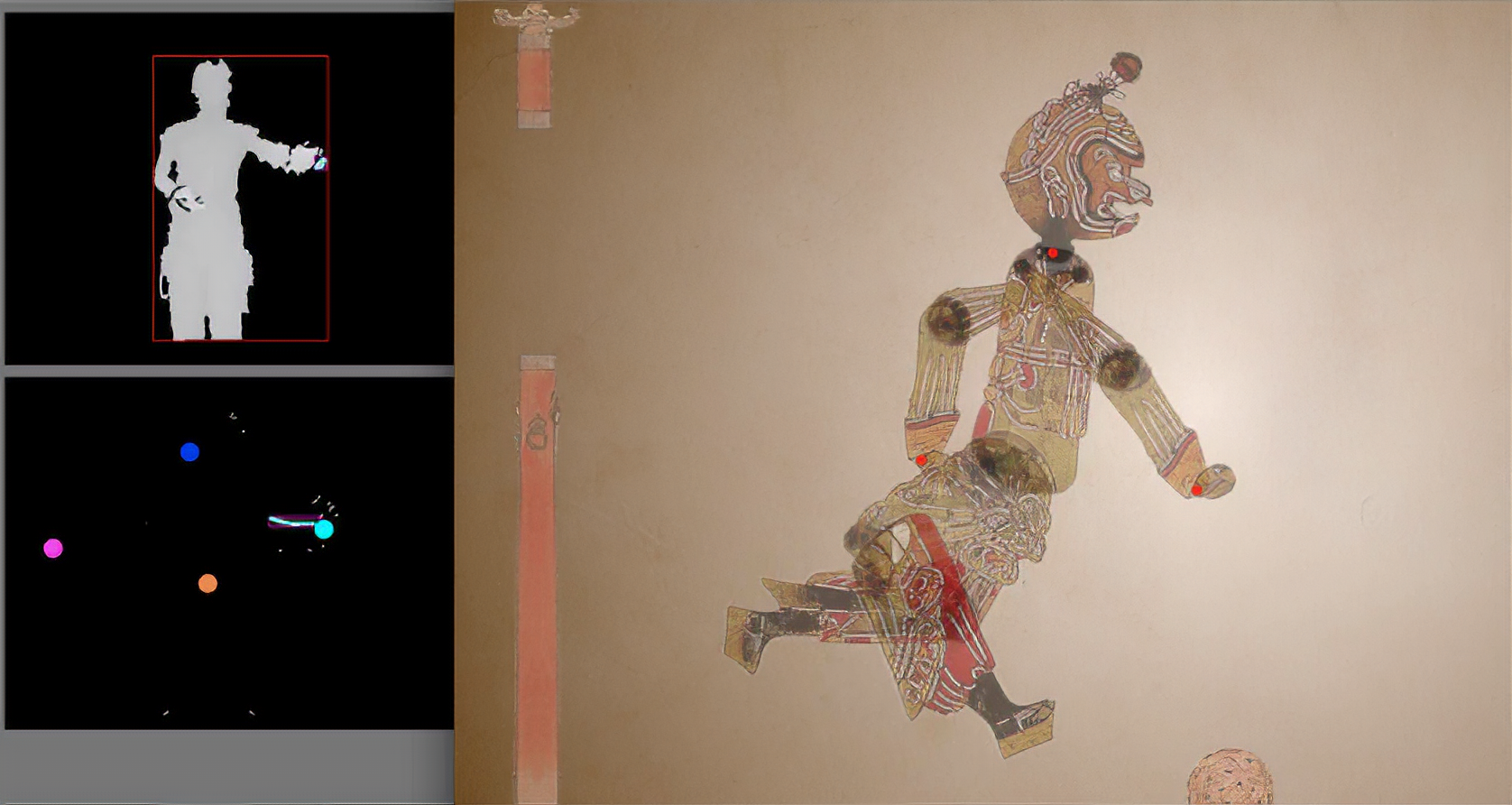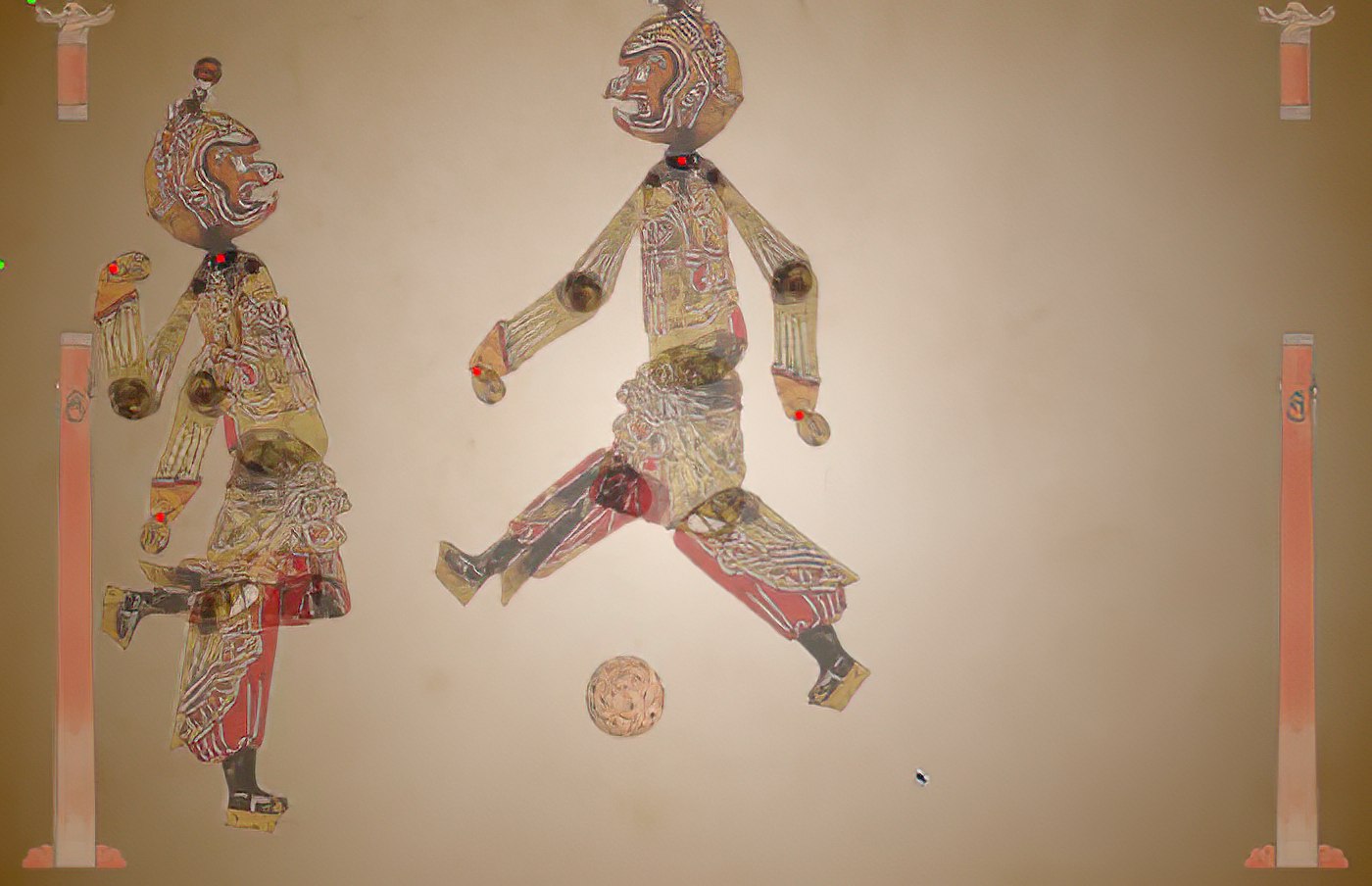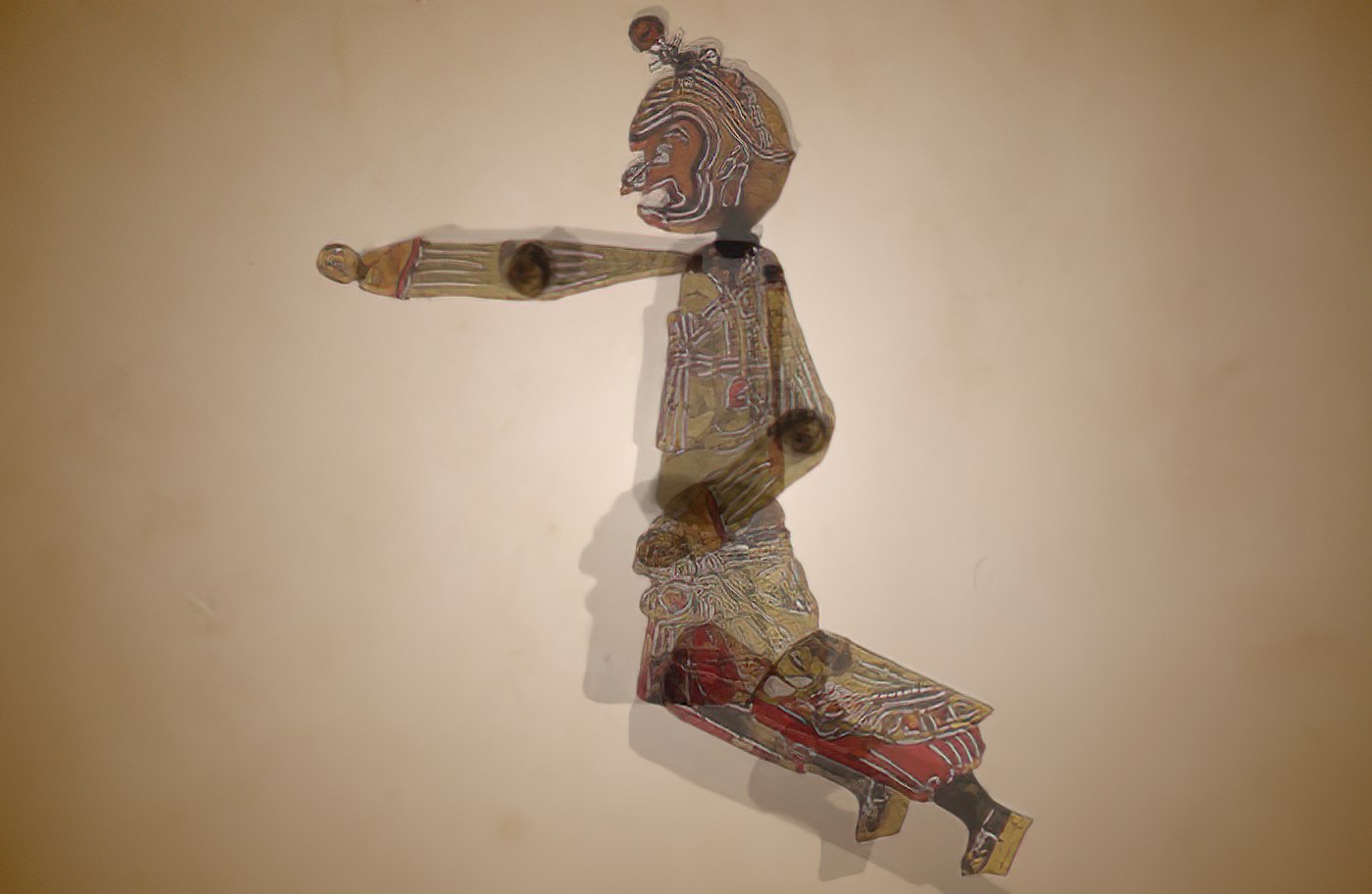Controlling puppets with neck, left hand and right hand
The traditional shadow-play game is played by controlling sticks attached to the puppets. I tried to make it more fun by controlling with full body movement. The controlling is through mapping 3 key points: neck, left hand, right hand.


